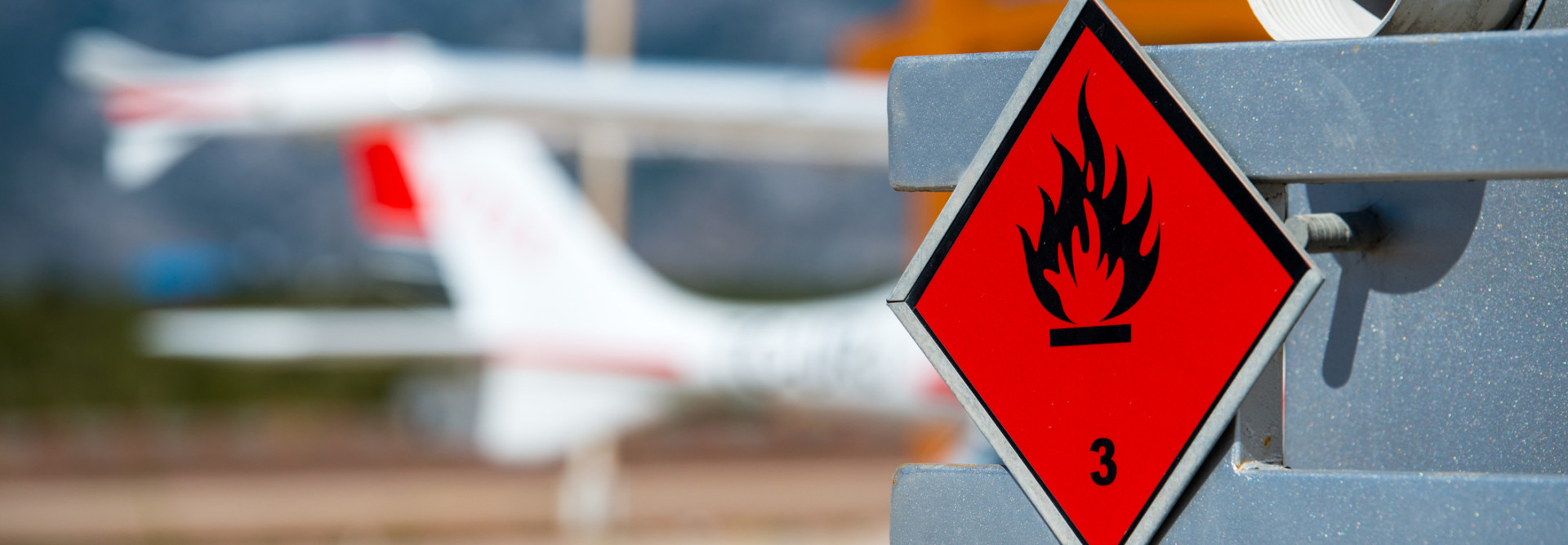
Safe and Secure Transport of Dangerous Goods
Identifying dangerous goods is the first step to transporting them safely. After that comes proper packaging, handling and storage. Clear communication between operators about the goods being transported reduces potential risks and therefore plays an important role in transporting dangerous goods.
However, some dangerous goods are classified as high consequence dangerous goods. In the case of these substances, safety measures relating to transport take on a special role, as such substances can cause extensive damage if exposed to risks. Find out more about the transport of dangerous goods and the requirements they pose in this article.
What Are Dangerous Goods?
Dangerous goods are substances or objects which are capable of posing a hazard to health, safety, property or the environment.
The transport of dangerous goods is not unusual, but serves industry and consumers on a daily basis. These include the transport of fuels, gases, fertilisers and various raw materials and preparations for industrial, manufacturing, agricultural and direct retail use. Some of the goods being transported are familiar to everyone from everyday use with items such as paints, batteries and aerosols such as deodorant and even ready-to-spray whipped cream being listed as dangerous goods.
Not just anyone can transport dangerous goods, but they must have the appropriate training and level of competence to do so. The transport of dangerous goods by air must also be authorised in accordance with international and national regulations. The purpose of the legislation on the transport of dangerous goods is to prevent damage and danger that the transport of dangerous goods may cause to people, the environment or property.
Not sure if your transport includes dangerous goods? Download our helpful checklist to find out.
Carefully Defined Operations: Transporting High-consequence Dangerous Goods
High-consequence dangerous goods pose a particular threat if misused. The official definition goes like this: “High consequence dangerous goods are those which have the potential for misuse in a terrorist event and which may, as a result, produce serious consequences such as mass casualties, mass destruction or, particularly for Class 7, mass socio-economic disruption.”
Therefore, the correct handling and storage of these kinds of dangerous goods must be carefully defined. There is no quick and dirty approach in the case of transport of highly dangerous goods as there are some crucial points to cover. Ensuring safe operations comes first.
But which substances are classified as high-consequence dangerous goods? Dangerous goods are generally classified into nine classes:
Class 1: Explosives
Class 2: Flammable Gases
Class 3: Flammable Liquids
Class 4: Flammable solids
Class 5: Oxidising substances
Class 6: Toxic & Infectious substances
Class 7: Radioactive substances
Class 8: Corrosives
Class 9: Miscellaneous dangerous goods
And in three packing groups (PG):
Packing group I High danger
Packing group II Medium danger
Packing group III Low danger
Of these, explosives, flammables and radioactive substances are obviously classified as highly dangerous, but they can be found in other classes too. Some substances become particularly dangerous when the quantities transported become large. These kinds of substances can be found for example in class 5 (oxidising liquids) and class 8 (corrosive substances). A common practical example is fertilisers, especially ammonium nitrate fertilisers, as ammonium nitrate is a key ingredient in some explosives. Together the class and the PG mandate how these goods need to be handled in transportation. This is where your logistic partner comes in.
Security Plan Minimises Risks
Dangerous goods need to be packaged and labelled correctly to comply with international and national regulations for each transport mode, to ensure they are carried safely.
For high-consequence dangerous goods, a transport security plan is also required. The security plan includes a review of operations, an assessment of security risks, a statement of measures to reduce those risks such as personnel training, procedures for dealing with breaches of security, and procedures for the evaluation and testing of plans. All parties involved in the transport must be engaged in a safety plan and should cooperate with each other throughout the delivery process.
This is something you don’t have to manage on your own. By choosing an experienced logistics partner with expertise in transporting dangerous goods, you can ensure that your transport goes smoothly from start to finish.
Looking for a Partner to Transport Dangerous Goods?
The transport of dangerous goods requires specialised knowledge, strong professional skills and very thorough planning, execution and documentation. At Jetlogistics we specialise in challenging transportation. Our personnel have vast experience shipping and packing dangerous goods, everything from Class 1 explosives to lithium batteries in consumer goods. We’ve carried dangerous goods cargo by air, sea, and road.
We’re happy to help you ensure your cargo shipment is safe and compliant with regulations. We have a ‘Ready For Carriage’ service available for you. With our service, you don’t need to worry about your shipments getting stopped due to wrong packing or markings, and we can also handle all the documentation (e.g. the dangerous goods declaration) and administrative paperwork for you.
If you have any doubts about how to proceed with your shipment, contact us for smooth and safe delivery of your goods. Your shipment is safe with us!

